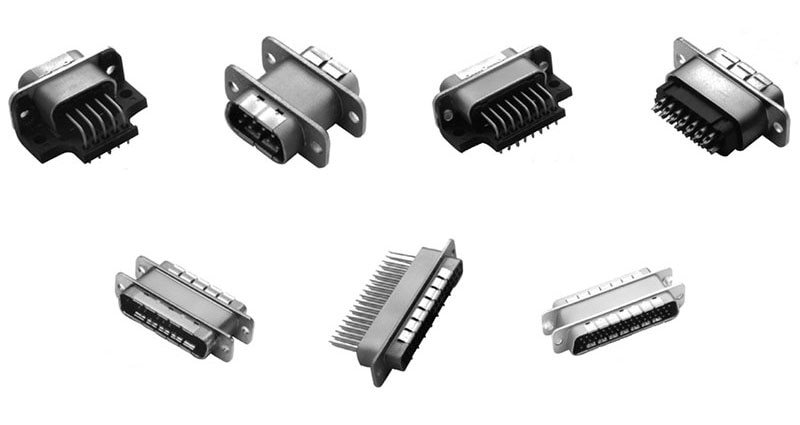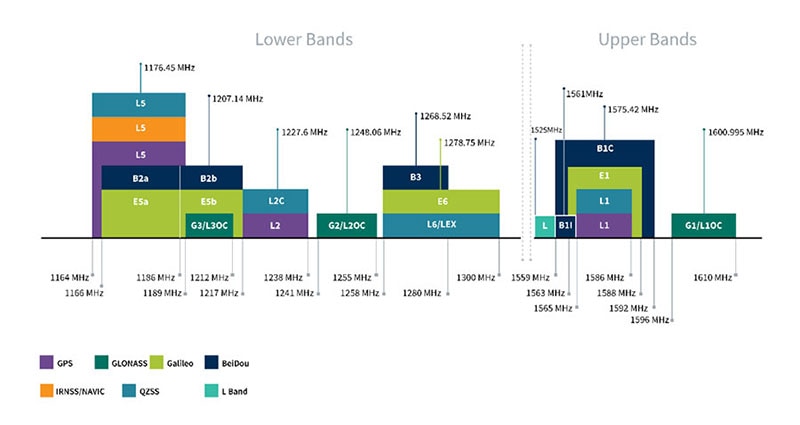Component Degradation is Unavoidable, But System Failure and User Harm Isn’t
Circuit designers—especially those implementing analog functions such as sensor front-ends or power supplies—live in a world of components with specifications that will inevitably drift and change due to passage of time (aging), active use, voltage variations, and temperature shifts. As a result, designers need to take such variations into account so their end-product does not fall out of spec once deployed. At least not prematurely, that is.
The need for protection against failure predates electronics, of course. The Westinghouse fail-safe railroad brake was developed in the late 1800s and is still used today. In this architecture, the presence of compressed air is needed to release the brakes. If the compressor, compressed-air reservoir, or air hoses fail in any way, the brakes engage and will not release.
For electronics, the principles are the same: we design to minimize the risk of failure as well as the damage if failure occurs. One twist: along with fail-safe measures, we’re also working on self-healing.
Preventing failure
There are several standard ways to prevent the degradation issue from becoming a problem; they can be used individually or in combination:
1: Choose components with suitably tight specifications for the critical parameters related to drifts due to aging, temperature changes, and shifts in operating points. This is usually a relatively costly approach. Parts with tight-enough specifications may not be offered, and even if they are, their availability may be limited.
2: Periodically invoke a calibration procedure while the product is in use. This requires at least one “golden” component, such as a voltage reference, which has superior stability over time and temperature. This component can be used as a standard for the calibration procedure. Again, this top-grade component may be costly or in limited supply. Also, the overall system architecture and software must include additional calibration circuitry, such as a high-resolution analog-to-digital converter (ADC) and corresponding calibration software.
3: Use an architecture or topology in which many errors self-cancel. One way to do this is with differential circuitry where changes in both “legs” of an analog front-end (AFE) track with each other, so the differential is quite low. This is especially attractive when the input resistors of an amplifier can be placed on the same die, for example, as with Texas Instruments’ INA133UA difference amplifier and R1 and R3 (Figure 1).
 Figure 1: For best performance, input resistors for the INA133UA difference amplifier are on-chip so they track each other, despite changes in temperature and other operating conditions. (Image source: Texas Instruments)
Figure 1: For best performance, input resistors for the INA133UA difference amplifier are on-chip so they track each other, despite changes in temperature and other operating conditions. (Image source: Texas Instruments)
In this example, the internal resistors are skewed by ±3 Ohms (Ω) each best case, a ±0.012% mismatch in their nominal 25 kΩ value; in fact, they could be only ±15% accurate across production units. While a ±0.012% mismatch seems quite small, it is at the limit of what is acceptable for the needed performance accuracy, and the worst-case ±15% inaccuracy puts performance well outside the design limit. But the more important factor is that the two resistors track each other nearly identically across temperature and other operating variations, and their differential ratio remains unchanged, yielding a high-accuracy circuit.
Similarly, the classic Wheatstone bridge makes use of a ratiometric input/output relationship where component ratios rather than their absolute values are important (Figure 2). It’s much easier to maintain accurate and consistent performance using such ratio relationships.
 Figure 2: The well-known Wheatstone bridge uses the ratio of its resistor arms to measure and null signals rather than absolute resistor values; the ratios are relatively independent of undesired shifts. (Image source: PEIO.org)
Figure 2: The well-known Wheatstone bridge uses the ratio of its resistor arms to measure and null signals rather than absolute resistor values; the ratios are relatively independent of undesired shifts. (Image source: PEIO.org)
When good components start to go bad: fail-safe and self-healing
Components that drift or age out of specifications are just one class of problem. Another issue arises when a component is stressed to partial failure or develops an internal fault due to a manufacturing defect.
In most cases, this is a problem without any easy solution. In mission-critical or hazardous voltage applications, the designer needs to consider the impact of potential failures and how to mitigate them or provide an extra layer of protection (these are often defined by regulatory standards).
For example, line-powered medical electronics may require isolation transformers to prevent even minuscule current from flowing to ground if there is an internal component or insulation failure. Similarly, line-powered (not battery-powered) power tools now use enclosures that are double-insulated with no conductive parts the user could touch. In this way, even if an internal high-voltage wire shorts to the case, there is no opportunity for dangerous current flow to (and through) the user, even if there is no safety ground power wire in the AC power cord.
In other cases, designers can select components such as capacitors that are designed to recover after a partial failure, or at least degrade in a benign fashion. For example, metalized polypropylene film capacitors such as the 5MPA2475E from Electronic Concepts Inc. will self-heal after a fault in the dielectric, which occurs due to high overloads or voltage transients (Figure 3).
 Figure 3: Metalized polypropylene film capacitors such as the 5MPA2475E can self-heal local faults (shorts) that can result from surges or voltage transients. (Image source: Electronic Concepts Inc.)
Figure 3: Metalized polypropylene film capacitors such as the 5MPA2475E can self-heal local faults (shorts) that can result from surges or voltage transients. (Image source: Electronic Concepts Inc.)
When the insulation breaks down, a short duration, highly localized arc forms at the breakdown site (Figure 4.1). The intense heat generated by this arc causes the metallization in the vicinity of the arc to vaporize (Figure 4.2), and simultaneously it re-insulates the electrodes and maintains the operation and integrity of the capacitor (Figure 4.3).
 Figure 4: The self-healing process is initiated when a fault arc forms between the metal layer (a) and the polypropylene film (b) at the breakdown site (1); the metallization in the area vaporizes (2); leaving an insulated zone which maintains separation between the layers and permits capacitor function to continue (3). (Image source: Schneider Electric, modified by Bill Schweber)
Figure 4: The self-healing process is initiated when a fault arc forms between the metal layer (a) and the polypropylene film (b) at the breakdown site (1); the metallization in the area vaporizes (2); leaving an insulated zone which maintains separation between the layers and permits capacitor function to continue (3). (Image source: Schneider Electric, modified by Bill Schweber)
Other capacitors do not heal, but instead, have what is called a “benign failure mode.” Even in the event of a short-circuit failure, for example, tantalum polymer capacitors such as the TCOD106M050R0150E from AVX do not exhibit an undesired “transient thermal event” (arcing or intense flare-up) that is possible with many magnesium dioxide (MnO2) cathode tantalum capacitors, which can lead to combustion and/or fires.
Conclusion
Designers must consider the impact on the performance of full or partial failure in the context of a product’s application. While a failed power-subsystem component in a smartphone does not put the user or system at risk, a short circuit in a line-operated supply might easily do so. That’s why nearly all such supplies have components for protection against overcurrent and overvoltage conditions, short circuits at the load, and even thermal cutoffs in case of overtemperature conditions.
In the ideal or perhaps in a future world, components that fail would begin to self-heal, much as the human skin, bones, and other organs start to repair themselves in many cases as long as the damage is modest. For now, an approximation to self-healing is only possible by using complicated schemes at a system level, such as redundant circuitry with some sort of automatic or manual switchover arrangement.
However, the challenge of devising self-healing wires, passive, and even active circuit elements is one which many university researchers are tackling (see References). Who knows, maybe someday individual components may initiate self-healing modes as a standard part of their design and operation?
Recommended Reading
1:“Understanding Polymer and Hybrid Capacitors”
https://www.digikey.com/en/articles/understanding-polymer-and-hybrid-capacitors
2: “Makers and Engineers: Get to Know Your Instrumentation Amplifier for Accurate IoT Data Capture”
3: “Sensors and Their Proper Conditioning: Part 1 - Piezoresistive Bridge Sensors”
External References
- Texas Instruments, “Difference Amplifiers—the need for well-matched resistors”
- European Passive Components Institute, “When benign is better: fail safe capacitor technology”
- European Passive Components Institute, “The self-healing characteristics of metallized film capacitors”
- AVX, “Technical Summary and Application Guidelines”
- AVX, “MLCC & Tantalum Interchangeability”
- AVX, “Conductive Polymer Capacitors Basic Guidelines”
- Kemet Electronics Corporation, “New Reliability Assessment Practices for Tantalum Polymer Capacitors”
- Kemet Electronics Corporation, “Evaluation of Polymer Counter-Electrode Tantalum Capacitors for High Reliability Airborne Applications”
- Vishay, “Conductive Polymer Capacitors: Frequently Asked Questions (FAQs)”
- Schneider Electric, “What is Self-healing for capacitors?”
- Electronic Concepts, Inc, “The Self-Healing Affect of Metallized Capacitors”
- University of Texas, “New ‘Self-Healing’ Gel Makes Electronics More Flexible”
- Tech Briefs, “Scientists Invent Self-healing Battery Electrode”
- Tech Briefs, Self-Healing Wire Insulation

Have questions or comments? Continue the conversation on TechForum, DigiKey's online community and technical resource.
Visit TechForum









